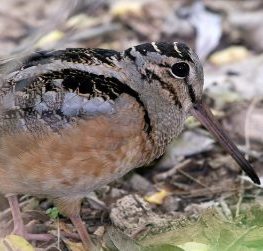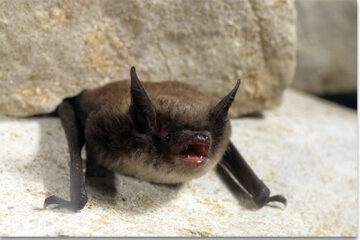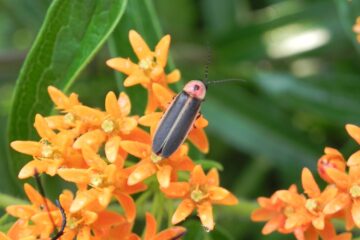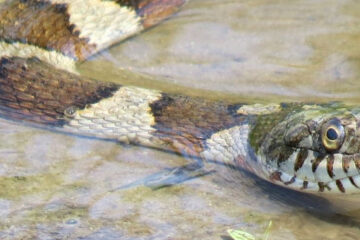
The American woodcock is a stocky, short-legged, short-necked, robin-sized bird, colored in shades of brown, tan and black. It is found summering east from the Mississippi River basin to southern Canada. When the ground is frozen, northern-most woodcock migrate south and winter in the Gulf States.
Woodcock probe into soft, wet soil for earthworms and grubs with their long bills. Large, dark eyes are set high and far aft on the head, allowing them to see almost entirely backwards, keeping alert for predators while feeding. The ears are positioned in front of the eyes, perhaps to hear faint earthworm sounds underfoot. All these peculiar adaptations have earned the woodcock an assortment of names befitting its oddities including, “timberdoodle,” “bog sucker,” “mud bat” and “big eyes.”
The woodcock’s preferred breeding habitat is in wet, open to brushy areas near deciduous woodlands. It nests on the ground laying 2 to 6 camouflaged eggs in a depression of leaves. The young are born precocial or, unlike most songbirds, fully feathered and ready to walk about minutes after they hatch.
Considered a game bird, the woodcock is the nemesis of many a hunter. It sits very tight to the ground and is difficult to flush. When it does take off, it zig-zags through the trees making a startling whistling noise. An interesting historical note is that the cocker spaniel was specifically bred to hunt the woodcock, hence the dog’s name.
The male woodcock is best known for its unique nuptial flight in late winter – early spring. An area where this ritual is happening is often referred to as a “singing field”. At sundown and sunup, when it is almost too dark to see, the male woodcock starts its “peenting call”. While calling, he struts around in circles waiting for a female to appear on the scene. After a few minutes, he takes off making a whistling or sometimes, clacking sound. Up and up he goes, making steeper and smaller spirals until he is only a speck in the sky. While this is happening, the bird’s flight feathers make a twittering noise that sound more like high-pitched chirps. He then begins a dizzying dive that tumbles him back to earth, returning on or near the same spot he launched his flight. After a short silence, the performance is repeated all over again. This aerial show lasts for thirty minutes to an hour and then the bird becomes silent, waiting for the next dawn or dusk to begin again (although, on bright moonlit nights, the dance may go on longer).
At Fairview Farm, woodcock have been known to arrive in late February. At twilight, on the first warm, windless evening, when you can smell the damp earth and the sky is light, stand quietly on the edge of an open field. Listen for the male’s nasal “peent” and position yourself east of him so you can watch his flight against the sunset. Hold still while he is strutting and peenting, but the moment you hear his clacking and whistling flight, move in closer to the spot where you heard him. These lovesick males are so involved in their courtship ritual, that if you stand motionless in the fading light, you can literally observe closeup the antics of the normally evasive woodcock. It is an unforgettable experience for young and old alike and warm spring evenings will forever hold a new meaning.



